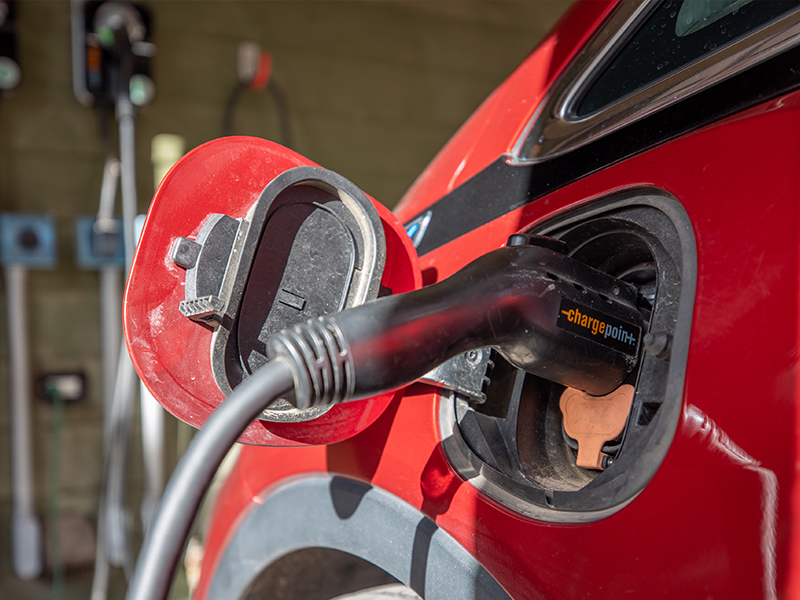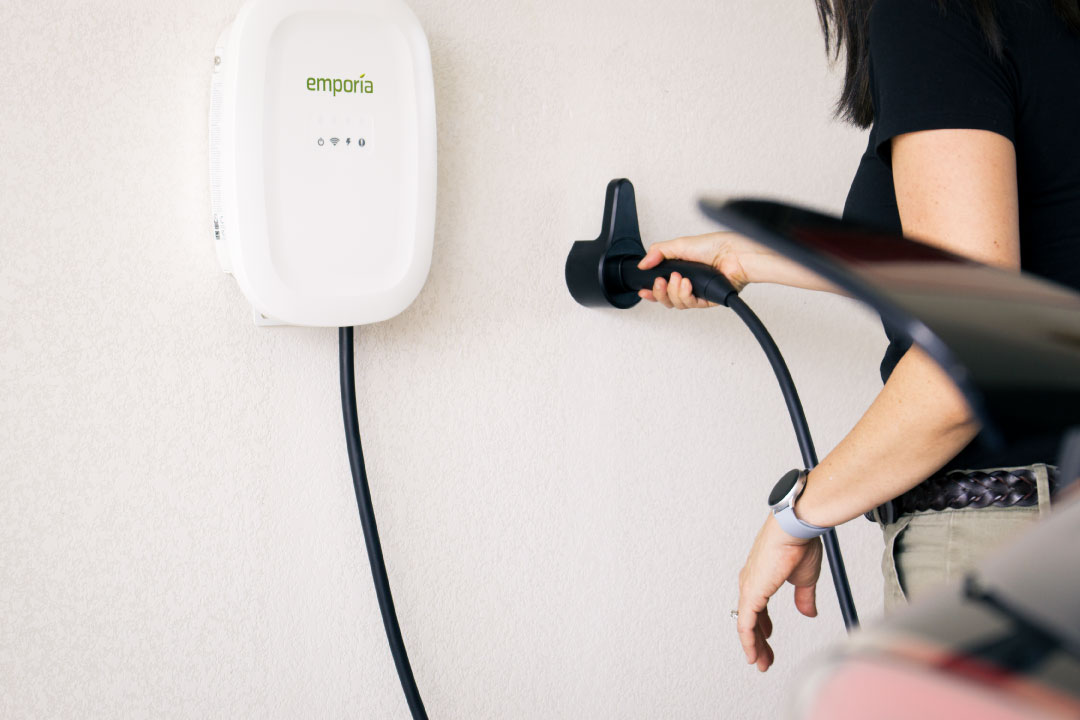Charge at Home helps you get the most out of your home charging experience. Simply choose an approved charger that best suits your needs, join the HCE network on your charging app, and we’ll reimburse you for the cost of the charger up to $549.
In exchange for the charger rebate, members participating in Charge at Home must allow HCE to occasionally delay charging during times of peak electricity demand. Keep reading below for full details.
To help make the process even easier, we can even cover the upfront costs of your charger installation and spread your repayment out over three years on your electric bill.

Participating members must enroll in our Electric Vehicle Charger Distribution Flexibility tariff.
Terms and Conditions for HCE’s Control of Electric Vehicle Service Equipment (EVSE):
1. HCE may delay or initiate the use of EVSE during times of peak demand.
2. HCE may delay or initiate the use of EVSE during times of peak renewable production.
3. Renewable oversupply expectations:
4. HCE may evaluate and consider all relevant conditions, including but not limited to forecasted and actual renewable generation, forecasted and actual peak hours, temperature, system load conditions, system operation needs, energy market conditions, transmission system conditions, and other emergency conditions in determining whether to exercise control over the Consumer’s EVSE.

The electric vehicle charger (or two) is free. Your electrician can quote you the cost to install the charger at your home. Installation may cost $800 to $2,000 depending on your property, access, location and labor costs. You can pay your electrician upon installation or have us pay the upfront cost and distribute it on your bill. But no slacking: If you don’t complete all the steps within 60 days, you’ll be charged $650 for the charger on your next electric bill.
To buffer installation costs, you can find rebates on our rebates page and at aspencore.org/core-rebates.
Your electrician will quote you the cost to install the charger at your home.
Installation costs vary depending on your property, access, location and labor costs.
You can pay your electrician upon installation or have us pay them directly and distribute the cost on your bill over the next 3 years. But no slacking: If you don’t complete all the steps within 60 days, you’ll be charged back your rebate amount and installation costs on your next electric bill.
Be sure to check out our list of Preferred EV Charger Installers.
Driving an electric vehicle is much cheaper per mile than driving a gas-powered vehicle. Nationally, EVs are three to five times cheaper to drive per mile than gas-powered vehicles, and cost about $300 less per year to maintain. On average, electric cars emit three times less CO2 than gas-powered cars.
Driving electric equates to spending about $1 per gallon on gasoline.
While electric vehicle sales continue to grow, the lack of accessible and affordable charging at multifamily housing complexes remains a major barrier to electric vehicle adoption.
That’s why we’re proud to expand our Charge at Home program to multifamily housing complexes, and extend financial support to those wanting to install charging equipment for their residents.
